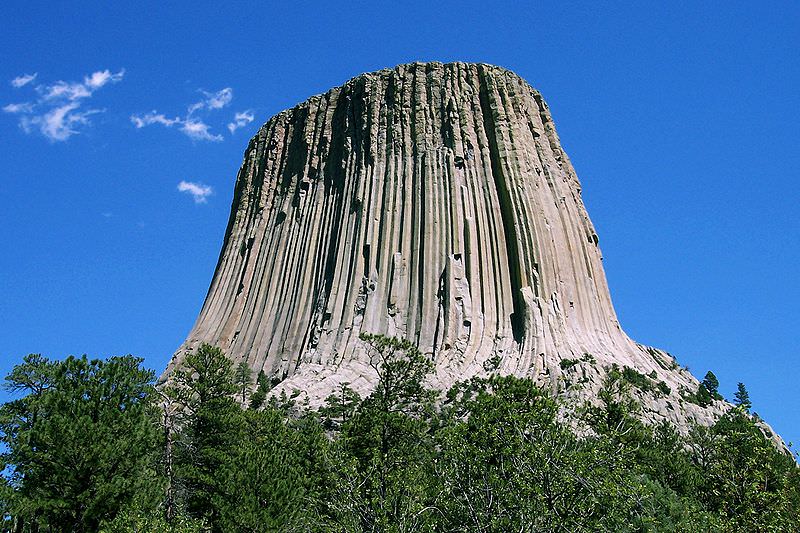Remember that strange rock formation in Close Encounters of the Third Kind. It looked like the top of a toothpaste tube, but made of solid rock. That’s a volcanic neck, and it has nothing to do with space aliens. In reality, a volcanic neck is the solidified magma trapped inside a volcano. After millions of years, the softer outer layer of the volcano erodes, and all that remains is the volcanic neck. The structure in Close Encounters is Devil’s Tower, located in Wyoming.
Volcanic necks are somewhat rare because when a magma plug forms within a volcano, it often leads to an explosive eruption, like what happened with Krakatoa, or more recently with Mount St. Helens. The plug is broken up and ejected as ash and rock in a split second. But if the pressure isn’t great enough to actually detonate the top of the volcano, the plug cools and hardens deep within the Earth.
There are some very famous volcanic necks around the world. Probably the most famous is Devils Tower in Wyoming. It rises 386 meters above the surrounding landscape, a lone prominence of rusty red rock. I’ve actually stood beside it, and it’s one of the most impressive geologic features I’ve ever seen.
The type of erosion will define the shape of the volcanic neck. For example, glaciers will erode away one side of the volcanic neck, but leave a long tail behind.
We have written many articles about volcanoes for Universe Today. Here’s an article about the largest volcano in the Solar System, and here’s an article about the largest volcano on Earth.
You can also find out more information about volcanic necks from the USGS.
We have also recorded an episode of Astronomy Cast dealing with volcanoes on Earth and across the Solar System. Check out Episode 141 – Volcanoes, Hot and Cold.

